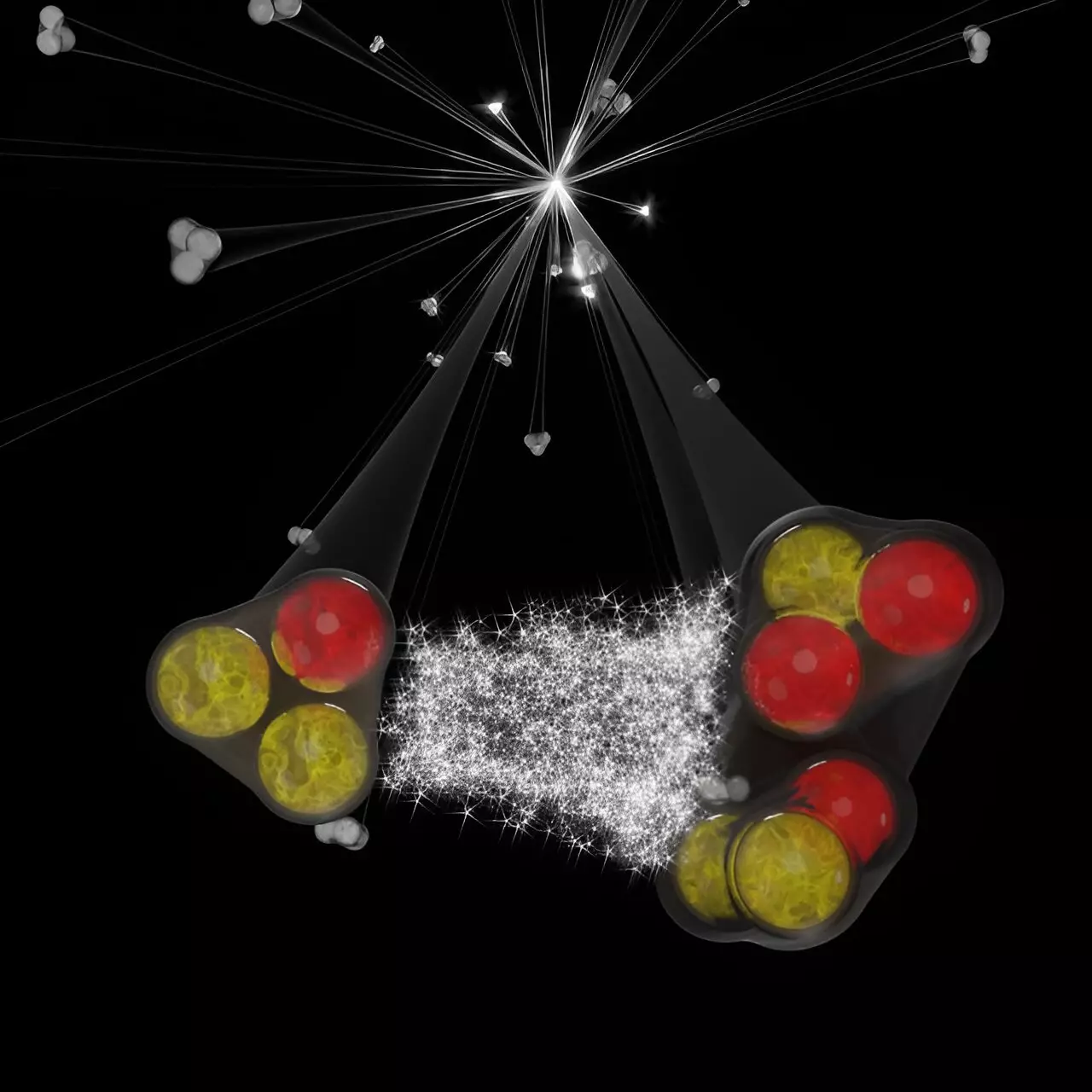Recently, groundbreaking research conducted by the ALICE collaboration has unveiled pivotal insights into three-body nuclear systems, particularly focusing on kaon-deuteron and proton-deuteron interactions. The study, published in *Physical Review X*, emphasizes the complexity of fundamental forces and their multifaceted manifestations within nuclear physics. At its core, a fundamental force describes interactions primarily between two constituents. However, reality presents a richer tapestry, where understanding interactions among three-body systems becomes essential for demystifying a plethora of phenomena ranging from nuclear structure to the enigmatic interiors of neutron stars.
Understanding Three-Body Systems
Interactions in three-body systems pose unique challenges for physicists. Proton-proton collisions at the Large Hadron Collider (LHC) provide fertile ground for exploring these interactions due to the high multiplicity of particles emitted during these events. When particles emerge in proximity, separated by lengths on the order of a femtometer (10^-15 m), they can influence one another significantly, governed by principles such as quantum statistics, Coulomb forces, and strong interactions. In particular, the presence of a deuteron alongside a proton or kaon transforms the setting into a three-body system—a crucial context for understanding short-range interactions that defy simpler two-body descriptions.
The ALICE collaboration’s innovative approach utilizes robust particle identification capabilities to measure correlations in high-energy proton-proton collisions. By employing a center-of-mass energy of 13 TeV, the researchers produced a correlation function that offers insights into the relative momenta of produced particles. This function acts as an experimental lens, revealing how the probability of detecting two particles with specific kinetic properties deviates from uncorrelated scenarios. In this framework, a value of one indicates no correlation, while values greater or lesser imply attractive or repulsive interactions, respectively. Therefore, the novelty of this approach lies in its capability to provide critical data about short-range interactions among correlated three-body systems.
One of the principal findings of the survey is the overall repulsive interaction between kaon-deuteron and proton-deuteron pairs, evidenced by correlation function values falling below one at low relative transverse momenta. Notably, this repulsion is characteristic of the dynamics governing these interactions across very close distances—around 2 femtometers. Such findings reaffirm the complexity involved in unearthing underlying mechanics, as the nature of these repulsive interactions complicates the two-body interaction models typically employed in nuclear physics.
Despite the intriguing insights gleaned from the kaon-deuteron correlations, the two-body model proved inadequate when applied to proton-deuteron correlations. This divergence underscores the necessity for advanced theoretical frameworks capable of accommodating three-body dynamics while integrating the structural characteristics inherent to deuterons. Employing a full three-body approach yielded a more comprehensive data description, signifying a marked improvement in aligning theoretical models with empirical observations.
A New Era in Nuclear Physics Research
The implications of the ALICE collaboration’s work extend well beyond the specific interactions examined. The method of utilizing correlation measurements at short distances paves the way for novel research avenues in three-body systems, potentially enlightening our understanding across different hadronic types. There are plans to adapt this methodology to scrutinize charm and strange baryon systems in the anticipated LHC Runs 3 and 4, addressing phenomena that have thus far remained experimentally elusive.
The profound insights into three-body nuclear forces detailed by the ALICE collaboration represent a significant stride in nuclear physics. The ongoing exploration of interactions among multiple particles challenges existing theoretical frameworks and enhances our comprehension of the intricacies involved in fundamental nuclear forces. As researchers delve deeper into these correlations, a richer understanding of nuclear matter and its behavior under exceptional conditions beckons, ultimately reshaping our grasp of the universe’s building blocks. The landscape of particle physics holds vast promise, and with each study, scientists step closer to uncovering deeper truths about the interactions that govern our world.


Leave a Reply